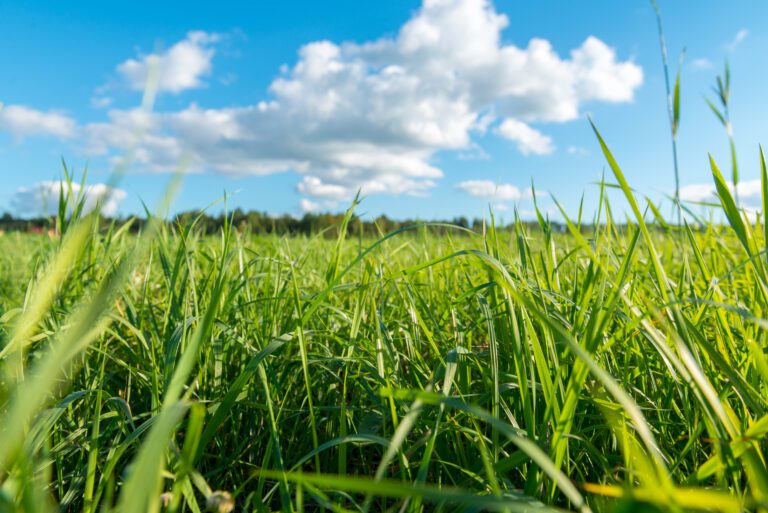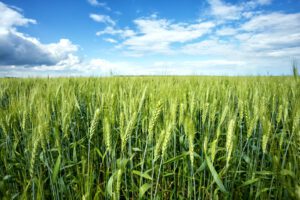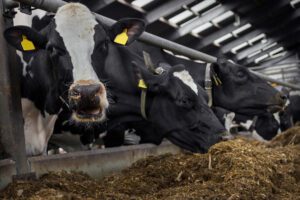News
- DAFM have agreed not to penalise patchy crops under BISS payments
- DAFM have applied for a derogation in the 3-crop rule
Weather
With rainfall well more than 100mm already recorded this year, compounded by a wet end to 2023, the challenge to get work completed is as strong as ever. This persistent rain has left fields completely saturated, not only preventing growers from catching up on missed winter cereal plantings but is also impacting on the spring sowing period.
Crop Walking
The importance of continuous, detailed assessment of crops on a field-to-field basis is vital. Plant counts are a key tool in determining the potential yield of each crop. Despite the temptation to re-sow patchy areas of winter cereals, this should be approached with caution and should only be considered as a last resort. There are significant economic implications associated with re-sowing to consider such as the ability of the lower yield potential spring cereal crops to carry the establishment costs associated with the removed crop.
When assessing your crops, especially those that appear thin or patchy, consider a strategic approach to fertiliser application. A 20% reduction in application rates of N, P and K may prove to be more cost-effective for these specific conditions. Always evaluate each crop’s needs to make informed decisions. This ensures we drive growth and tillers for optimum recovery, while also considering overall economic input efficiency.
The Importance of Roots
Given the weather we’ve had since sowing, root systems in general are in poor condition due to waterlogged soils. Poor roots systems result in poor fertiliser utilisation, and can lead to root diseases like Eyespot and Take all if or when we experience dry periods. To increase root mass an application of a foliar P fertiliser should be included early, along with your normal trace element application practises. By doing this it helps the plant drive root mass, aiding tiller survival and ultimately helping to increase and maintain yield .
Winter Barley
Uniformity is key for crops this spring, a plant count of 150-250 plants/m² in Winter Barley is a perfectly viable crop. It is advised to get the first split of nitrogen onto barley as soon as possible, to drive growth and encourage tillering. An early application of 40 units of nitrogen can be enough to kickstart the crop in early March. It is recommended to follow this with the main split before GS32 (Second node detectable).
Winter barley is sensitive to stress, so be cautious with early applications of Plant Growth Regulators (PGR). These should only be considered when the temperature are above 8 degrees and ideally before the crop reaches GS30. PGRs can help reduce the apical dominance, encouraging the plant to develop stronger roots and more tillers.
Weed control is a priority for winter barley. While the application to control certain grassweeds such as annual meadow grass has passed, there’s still an opportunity to tackle weeds such as chickweed, cleavers, poppies, and other broadleaved varieties. Effective herbicide application now can help ensure a cleaner crop and reduce competition for resources.
Drummonds Trial Plot emerging
Winter Wheat
Wheat has a great ability to make up for lost time and conditions—it’s a crop that can compensate. Achieving an even spread of plants is just as important for wheat as it is for barley. Aim for a plant count of 90-200 plants/m² to produce viable yields.
Getting nitrogen on your wheat early is key to pushing your plants forward and maximising tiller numbers. The nitrogen applications can be divided into three parts: ¼ ; ½ ; ¼. Where there is a risk of take-all or on second wheats, higher initial N application rates as soon as possible is advisable.
Don’t delay with herbicide applications. As soon as the weather and soil conditions allow, apply herbicides to control weeds. Timely applications are crucial to prevent weed competition to ensure a productive growing environment. Making the most of the early spring window for these treatments can make a significant difference to the success of your crop.
Field history is crucial when making the correct herbicide choice, especially where no Autumn application has taken place.
Phosphate & Potash
Its vitally important to ensure you have in date soil test results. Soil tests are required every 4ha (10ac). Without a soil test, it is assumed that the soil is at Index 4 for Phosphorus (P), and as a result, no Phosphorus allowance will be made for that area.
Phosphorus (P) and Potassium (K) applications should be carefully considered to replace crop nutrient offtakes. This approach ensures that soil fertility is maintained at optimal levels for the growth and health of your crops.
| Winter Cereal | 10t/ha | 7.5t/ha |
| P Offtake | 38 kg/ha | 28 kg/ha |
| K Offtake | 98 kg/ha | 74 kg/ha |
| (Teagasc 2024) | ||
Adhering to these guidelines not only supports sustainable farming practices by maintaining soil health but also ensures optimum yields and quality by ensuring that your crops have the necessary nutrients available. Always consult with your Drummonds Agronomist for specific advice and recommendations tailored to your farm’s conditions and crop varieties.
Winter Oilseed Rape
Evaluating the Green Area Index (GAI) of your oilseed rape after winter is crucial for optimal crop management. GAI measures the amount of green leaf area compared to the area of ground it covers. If your crop has a large and dense canopy, you might be able to reduce the amount of nitrogen (N) fertiliser needed. For crops with a GAI less than 0.8 or covering less than 50% of the ground, using a PGR can help develop a more uniform canopy and increase the leaf area, which is key for enhancing the number of seeds per square meter and, consequently, the potential yield.
You can start applying Growth Regulators at the beginning of stem extension and continue up to the yellow bud stage. This helps in shaping the crop’s canopy for better sunlight penetration and air circulation, which are essential for healthy growth.
An early application of fungicides is critical for controlling diseases such as Light Leaf Spot and Phoma Stem Canker, which can significantly impact crop health and yield. It’s particularly important to act quickly against Light Leaf Spot, treating it as soon as you notice the first signs to prevent widespread damage.
| Crop Description | Total N |
| GAI < 1.0 | 225kg/ha |
| GAI 1.0 | 210kg/ha |
| GAI 1.5 | 190kg/ha |
| GAI 2.0 | 130kg/ha |
| (Teagasc) | |

Spring Beans
The best time to plant beans is from early March to the first week of April. For spring-sown beans, aim for a density of 25-35 plants/m2 (depending on Thousand Grain Weight (TGW)). They have the potential to be very profitable through availing of the protein payment scheme. Key factors like seeding rate, plant spacing, and the TGW are critical to consider for a successful bean crop, with early planting preferred. Soil conditions play a significant role in the outcome of bean cultivation; for instance, data from the PGRO highlight that soil compaction can lead to yield losses of up to 40%.
It’s important to incorporate P & K into the seedbed when planting beans. Drummonds Agriphos is an excellent source of P & K, providing nutrients that are immediately available to the plants. This not only helps with root development and soil structure but also boosts microbial activity in the soil. Agriphos also contains trace elements like calcium and Magnesium, which are beneficial for nutrient uptake and improving soil quality.
Pre-emergence weed control is crucial in bean crops as there are not many post-emergence spray options. Be mindful of your rotation, where oilseed rape is included the herbicide Emerger can be used to help control volunteer rape in bean crops. It is recommended that beans are grown no more than once in a 5-year rotation.
Spring beans emerging
Spring Cereals
For spring-sown cereals, it is crucial to give your crops a strong start. Incorporate 1/3 of the crop’s N requirement into the seedbed. This early boost of Nitrogen is essential for getting the crops off to a vigorous start. Always consider the thousand grain weight (TGW) and do not hesitate to reach out to your Drummonds Representative for advice on specific varieties. Remember, the success of spring cereals heavily depends on the condition of the ground at the time of sowing.
Nitrogen is the cornerstone for achieving high yields, feeding tillers, and promoting the development of green leaf area.
Drummonds N-Rich Liquid Nitrogen is an excellent option to consider while planning your Nitrogen applications. N Rich is a blend of 24 N and 3 S which provides flexibility, accuracy, and efficiency of application. It can be applied under various weather conditions and across greater spreading widths



